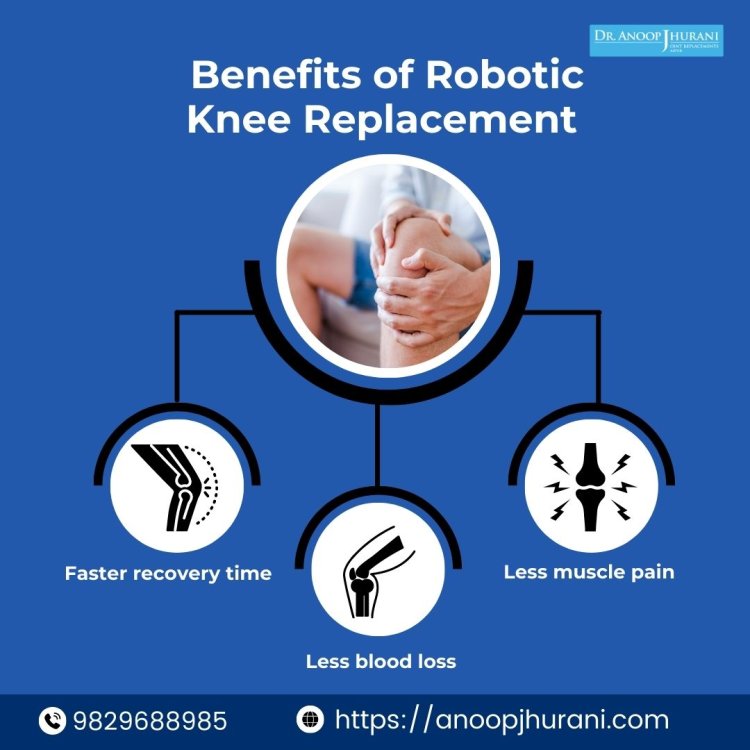Benefits and Recovery of Robotic Total Knee Replacement
Get better alignment and balance with total knee replacement surgery in Jaipur, by the most experienced surgeon.
Share this Post to earn Money ( Upto ₹100 per 1000 Views )

With over 12,000 surgeries completed, robotic total knee replacement specialist Dr. Anoop Jhurani offers the best results in the field. The patient will benefit from having him perform the surgery, as he is composed and carefully analyzes each patient before beginning. To ensure his patients are comfortable, he also provides pre and post-operative care.
The Promise of Robotic Knee Replacement
- Robotic Knee Replacement, also known as robot-assisted knee arthroplasty, is a procedure that combines the skills of a skilled surgeon with the precision of robotic technology. The advantages it offers are nothing short of remarkable:
- Unprecedented Precision: Robotic systems provide unparalleled accuracy in implant positioning, alignment, and bone preparation. This precision enhances the longevity and functionality of the knee implant.
- Personalized Planning: Before the surgery even begins, robotic systems create a 3D model of the patient's knee anatomy. This aids in creating a personalized surgical plan, tailored to the patient's unique needs.
- Optimal Alignment: Correct alignment is crucial for the proper functioning and durability of the implant. Robotic assistance ensures that the knee implant is aligned with utmost accuracy, reducing the risk of complications.
- Minimally Invasive Approach: Robotic systems allow for smaller incisions, resulting in reduced tissue trauma, less pain, and a quicker recovery period.
- Faster Recovery: Due to the precise nature of robotic knee replacement, patients may experience a faster recovery and return to their daily activities sooner than with traditional methods.
Navigating the Recovery Process
After a robotic total knee replacement, the recovery process is crucial for regaining mobility and enhancing the quality of life. Here's a general overview of what to expect:
- Immediate Post-Surgery: After the procedure, patients are monitored closely as they wake up from anesthesia. Pain management strategies are employed to ensure comfort.
- Hospital Stay: The length of the hospital stay varies, but many patients can leave the hospital within a few days.
- Physical Therapy: Rehabilitation begins shortly after surgery. Physical therapists guide patients through exercises to regain joint mobility, strength, and stability.
- Pain Management: Pain management is a priority during the recovery process. Medications and other techniques are used to manage pain and discomfort.
- Mobility: Gradually, patients will work on walking with the help of assistive devices, such as crutches or walkers.
- Return to Normal Activities: The timeline for returning to normal activities varies, but many patients can resume light activities within a few weeks and more strenuous activities within a few months.















